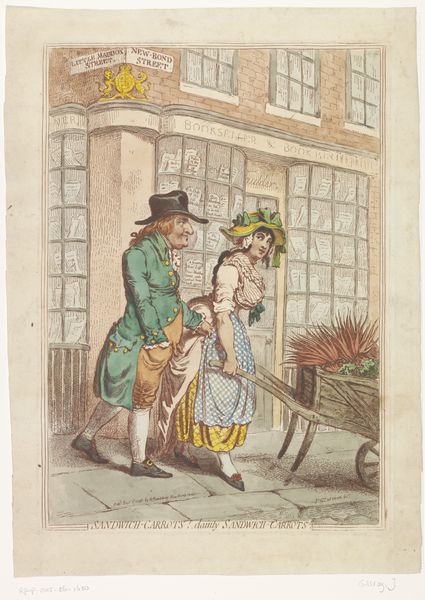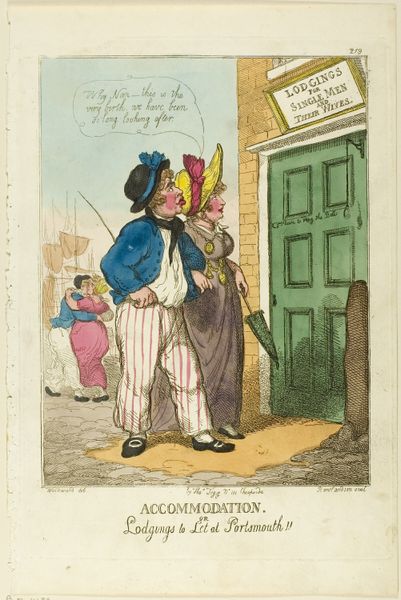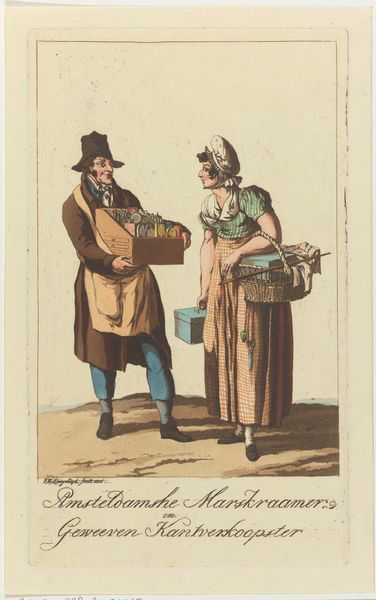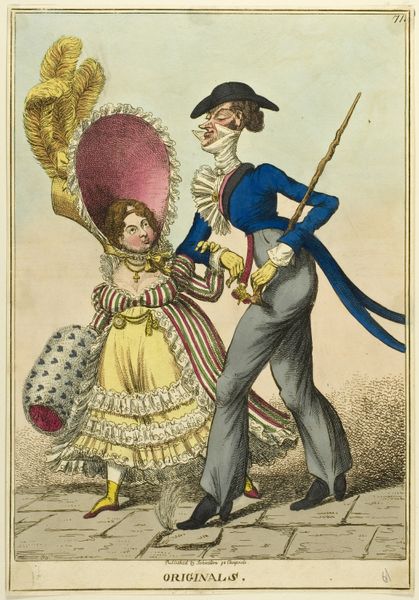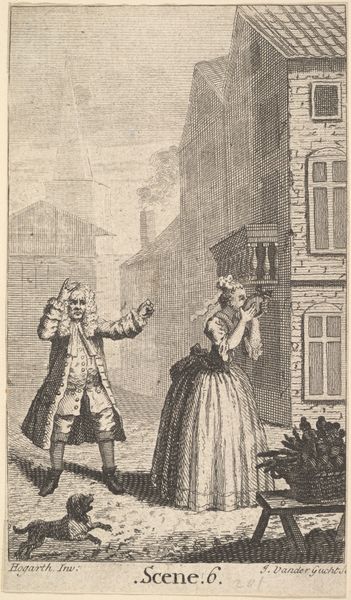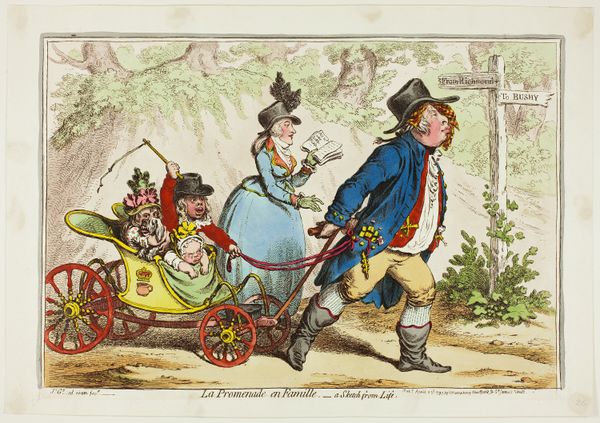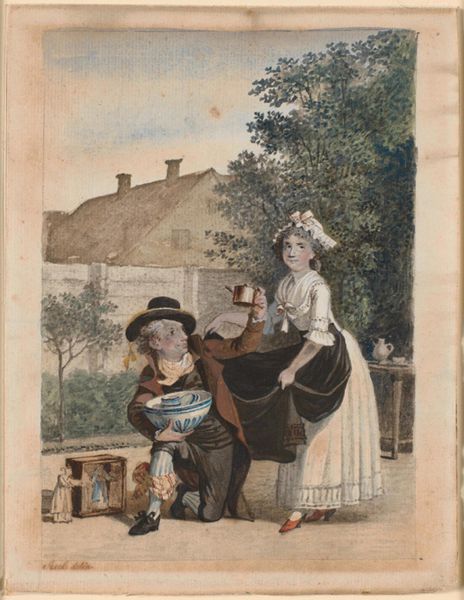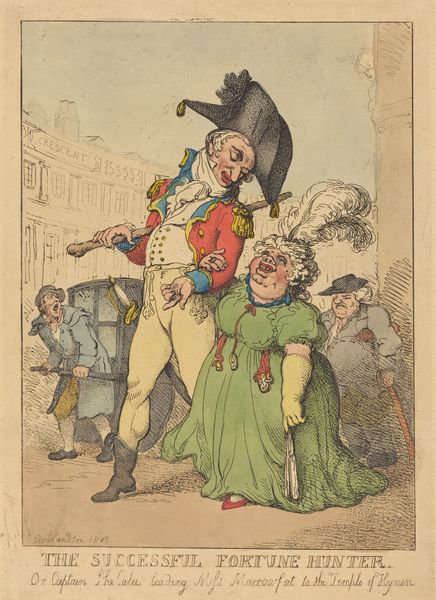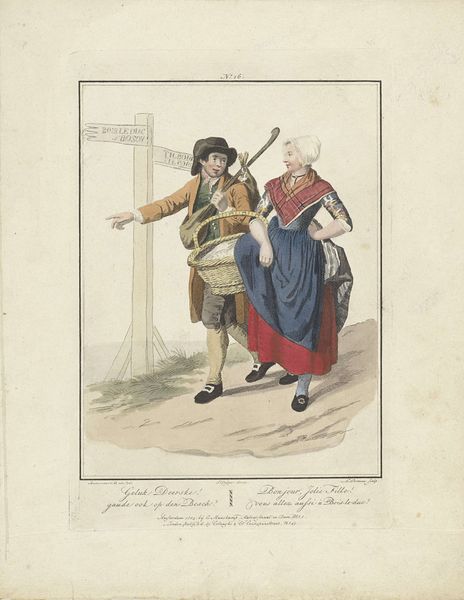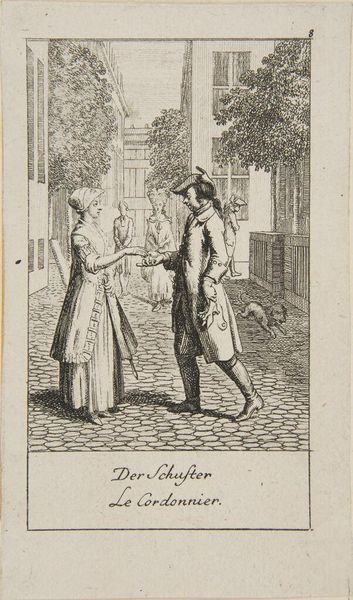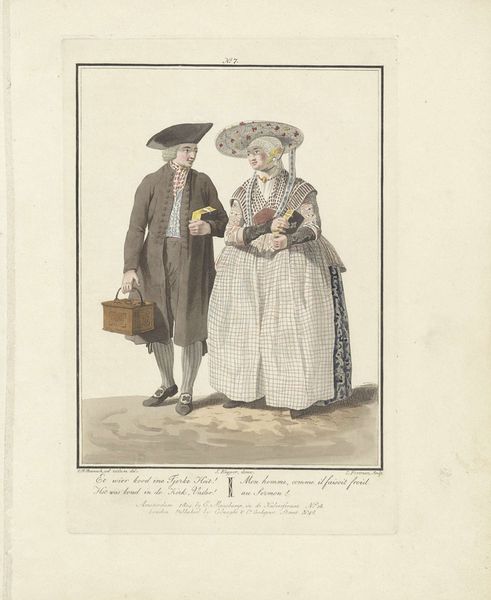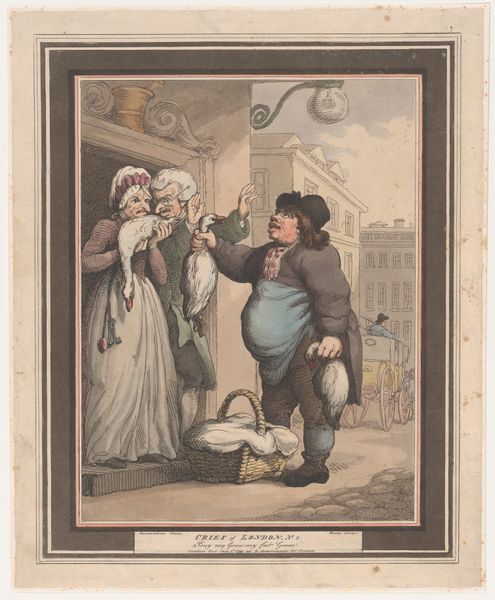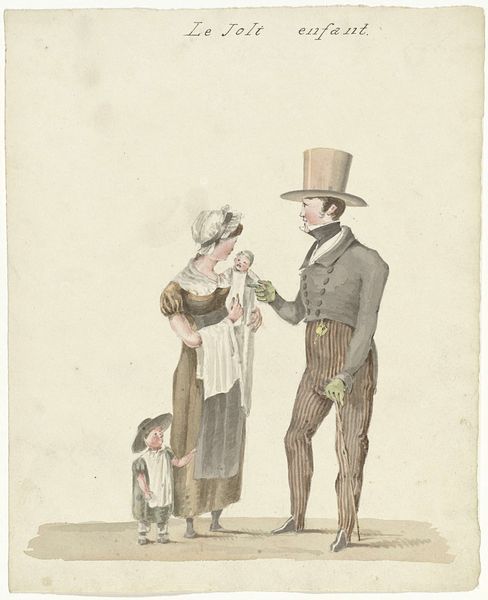
drawing, print, etching
#
drawing
# print
#
etching
#
caricature
#
caricature
#
romanticism
#
genre-painting
#
history-painting
Dimensions: 353 × 247 mm (image); 357 × 257 mm (plate); 394 × 293 mm (sheet)
Copyright: Public Domain
Curator: Let's examine "Sandwich-Carrots!-Dainty Sandwich-Carrots," a hand-colored etching created around 1796 by James Gillray. It’s currently held here at the Art Institute of Chicago. My initial read is its comedic charge – the high-contrast colors and the exaggerated forms set an immediately farcical tone. What is your response, initially? Editor: Well, I can’t deny that my first impression is of… well, it’s crass. The way he’s reaching for her posterior. This imagery, set against the backdrop of a London street, feels socially charged. I think there is certainly something provocative. Curator: Precisely, look how Gillray directs the composition using a tight pyramidal structure culminating in the figures. Their gazes, and even the implied narrative through their exaggerated forms, draws our eye up and across this arrangement that he presents before us. But, what narrative can we extrapolate from the situation? Editor: One immediately wonders about class. We have this… well, I would call it “harassment,” in public, no less. Is Gillray commenting on social divisions and power dynamics here, with this clear disparity in dress? How were such interactions regarded in the social context of the late 18th century, with the emergence of London’s streets? Curator: Indeed. The inscription "Sandwich-Carrots! - Dainty Sandwich-Carrots" is an intriguing element. The interplay of textual and visual information can provide insights here into consumerist culture and gender roles; there seems to be underlying tension between objectification, commodification and a commentary on the burgeoning urban economy that could point toward a greater complexity than pure slapstick. It all hinges upon interpretation of the street vendor’s position to the predatory gentlemen, which may or may not hold commentary. Editor: The setting is particularly interesting too: the "Bookseller & Bookbinder" facade in the background. Is it possible that the bookseller is a patron for such behavior or a moral center that is now fading away; Perhaps there is more a general cultural commentary that Gillray delivers. Curator: I believe your interpretations are validated given the artistic approach that presents such stark forms against that rigid background; It appears there’s much left to explore here from aesthetic angles, while also exploring history concurrently in the face of a very unique perspective that Gillray delivers. Editor: Yes, perhaps this pushes us toward richer cultural analysis as we ponder the power dynamics reflected and the social implications during his era that challenge our views today.
Comments
No comments
Be the first to comment and join the conversation on the ultimate creative platform.
